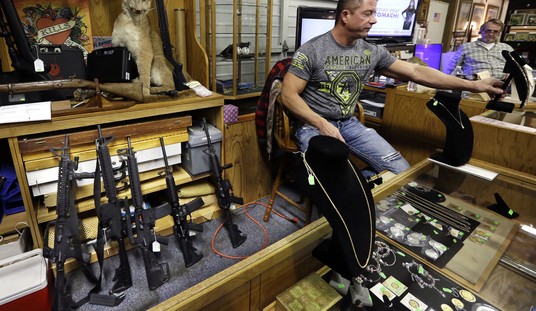It was entirely predictable that President Barack Obama would refuse to address the reality that the Islamic terrorist loyal to ISIS targeted a gay nightclub in Orlando during the Muslim holy month of Ramadan, even though before he made his public statement it had already confirmed by authorities that the attack was carried out by an Islamic terrorist loyal to ISIS. Obama has never missed an opportunity to defend the religion of his youth, even as he professes to being a Christian today.
It was also just as predictable that Obama would use the Islamic terrorist attack on the Pulse nightclub to attack the gun rights of law abiding citizens who don’t hate anyone, and who have committed no crimes. He once again asserted that we need more gun laws to save lives, even though the terrorist passed background checks to purchase his AR-15 rifle and handgun.
For the sake of argument, let’s pretend that the 1994 “assault weapon” ban signed into law by President Bill Clinton did not sunset (expire) in 2004. Let’s pretend that Congress reauthorized the law, and that President George W. Bush re-signed it, making it permanent. Would it have made any difference at all during the Islamist terror attack early this morning in Orlando?
The short answer is, “no, probably not.”
Now here’s the longer answer explaining why it wouldn’t have made difference.
The 1994 “assault weapons” ban was nothing more or less than a ban on some firearms by name, and others by a combination of purely cosmetic features. That may sound absurd, but it’s entirely true.
If the “John Doe Company AR-15 Sporter” was banned specifically by name in the law, all John Doe Company had to do to keep an Ar-15 rifle on the market was remove those insignificant cosmetic features, and then produce the same firearm with a slightly different name.
In reality, this had the effect of speeding up production of the exact same gun, making it less expensive to produce while making it more profitable to sell.
Here’s an example of precisely how that worked throughout the life of the 1994 ban.

A quick glance at the rifles above would show two nearly identical AR-15 rifles. They fire the exact same bullets, use the same magazines, have the same one-shot-per-trigger-pull rate of fire, and the same accuracy, lethality, and range. So what’s the difference, if there isn’t a meaningful difference?
That’s precisely my point: there was no meaningful difference.
The rifle on top, the “ban-era” gun that sold in the millions from 1994-2004, is missing a flash hider and bayonet lug, and has a fixed stock. The rifle on the bottom has a flash hider, which is of little consequence, and a bayonet lug, which is of even less consequence. The stock on the bottom rifle could collapse about 4″ to use slightly smaller rifle cases when they were stored. Otherwise they were identical in every meaningful way.
Another component of the 1994 “Assault weapon” ban was a 10-round magazine limit. This was also a paper prohibition that meant almost nothing.
Magazines are nothing more than a metal or polymer tube with a spring to push bullets up under tension, with a simple piece of metal or plastic called a follower separating the spring from the bullets. In a dedicated factory, it takes seconds to manufacture simple magazines, and that is precisely what occurred in the lead up to the 1994 bill taking effect.
Manufacturers went to three shifts and churned out tens of millions of magazine bodies, which all qualified as “”pre-ban” magazines. These were warehoused and sold throughout the entire life of the ban. 30-round magazines for AR-15s and similar rifles were readily available for sale through catalogs, mail order, in gun shops, and via this relatively new thing called the World Wide Web throughout the life of the ban, and there were so many of them for sale that prices hardly increased.
Even more amusing is that these same factories never slowed production of the same magazine bodies, and simply incorporated a round-limiter in the follower to restrict these magazines to a ban appropriate ten rounds. In the unlikely event that someone wanted a 30-round magazine, but didn’t have access to a gun shop, catalog, or the World Wide Web, they simply had to change out the follower on a 10-round magazine, or depending on the design, simply modify the existing follower in a matter of seconds.
Put bluntly, the Clinton “assault weapon” ban was a paper tiger that protected no one. the same holds true for the “assault weapon” bans so frequently and impotently proposed by President Obama or Democrat front-runner Hillary Clinton.
So what can be done to prevent another terrorist attack like we saw in Orlando this morning, or a school massacre like we saw at Sandy Hook of Virginia Tech?
If I had a simple, one-size-fits-all solution I’d gladly share it. Unfortunately, all I can really tell you is that no weapon ban of any kind is going to stop mass killings by those individuals or groups motivated to carry out such barbaric attacks.








Join the conversation as a VIP Member